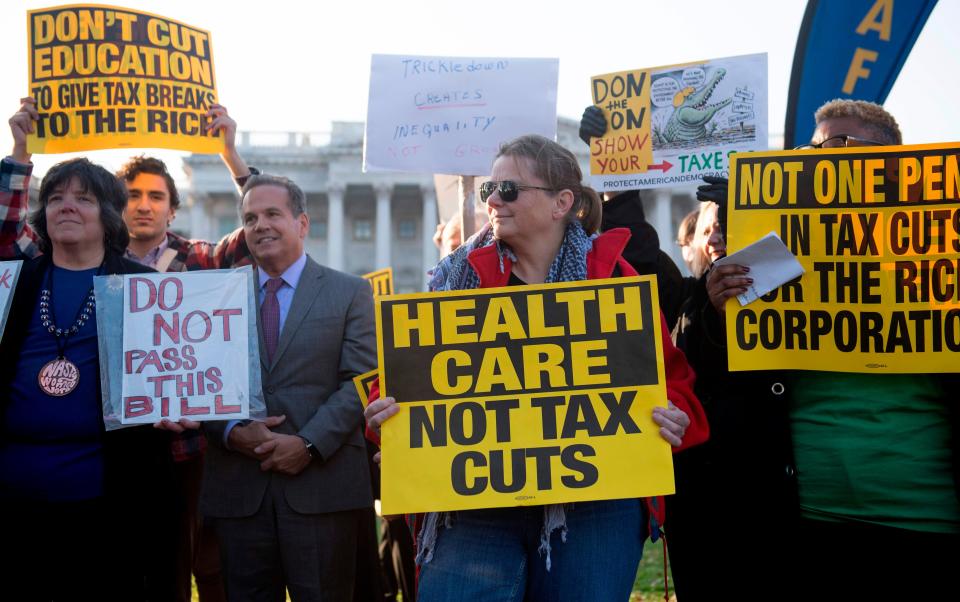Trump tax cuts hiked the deficit, now $1 trillion, so guess what Republicans want for 2020
In 2017, trying to sell Congress on a $1.5 trillion package of tax cuts, President Donald Trump made some pretty Trumpian predictions.
“The economy now is at 3% (growth),” he said. "Nobody thought it would be anywhere close. I think it could go to 4, 5 and maybe even 6%, ultimately.”
In fact, the economic growth rate that year was not 3% but 2.4%. And with Trump’s sweeping, massive, transformative, awesome, really huge tax cuts, the growth rate in 2018 surged all the way up to — drumroll, please — 2.9%.
That’s right, half a percentage point, and even that uptick was short-lived. Most projections for this year have it back below where it was before enactment of the tax cuts. Next year’s projections range from 2% to outright recession.
Deficit hits $984 billion
But the tax cuts, along with some bipartisan spending in the Trump era, have moved the needle in one significant way: They have caused federal borrowing to skyrocket. The Treasury Department has reported that for the fiscal year ending Sept. 30, the government spent $984 billion more than it collected. That’s an astoundingly large deficit at a time of record low unemployment, and a deeply troubling one to boot.
The 2019 deficit was more than double what it was in 2015 and up from $160 billion in 2007, before the Great Recession.

REP. KEVIN BRADY: New tax cuts would lock in the gains
So in a time of trillion dollar deficits, what are Trump and congressional Republicans planning just in time for the 2020 elections? Another tax cut bill.
Never mind that the nation can't afford it, and that the effects of the last one were disappointing because:
►There is relatively little that tax cuts can do to boost an economic expansion growing long in the tooth.
►The stimulative effects of the tax cuts were offset in part by the depressive effects of Trump’s trade wars.
►The tax cuts were heavily focused on corporations (which used a lot of the money to buy back stock and pay down debts) and wealthy individuals (who had no real reason to dramatically change their behavior).
Keeping recession at bay
The 2017 tax cuts were not without their selling points, like a doubling of the standard deduction that made filing easier for many taxpayers. But much of what was good and directed at the middle class was temporary, while tax cuts for wealthy heirs and passive owners of privately held companies were permanent.
In hindsight, the tax cuts look mostly like an effort to reward key GOP constituencies, to punish blue states by capping the deduction for state and local taxes, and to give just enough of a jolt to the economy to ensure that any recession is pushed back beyond next year’s election.
That wasn’t much of a rationale then. And it certainly is not much of one now.
USA TODAY's editorial opinions are decided by its Editorial Board, separate from the news staff. Most editorials are coupled with an opposing view — a unique USA TODAY feature.
To read more editorials, go to the Opinion front page or sign up for the daily Opinion email newsletter. To respond to this editorial, submit a comment to letters@usatoday.com.
If you can't see this reader poll, please refresh your page.
What do you think of our view on tax cuts?
This article originally appeared on USA TODAY: Post-Trump tax cuts, the deficit is $1 trillion. Republicans not done.

